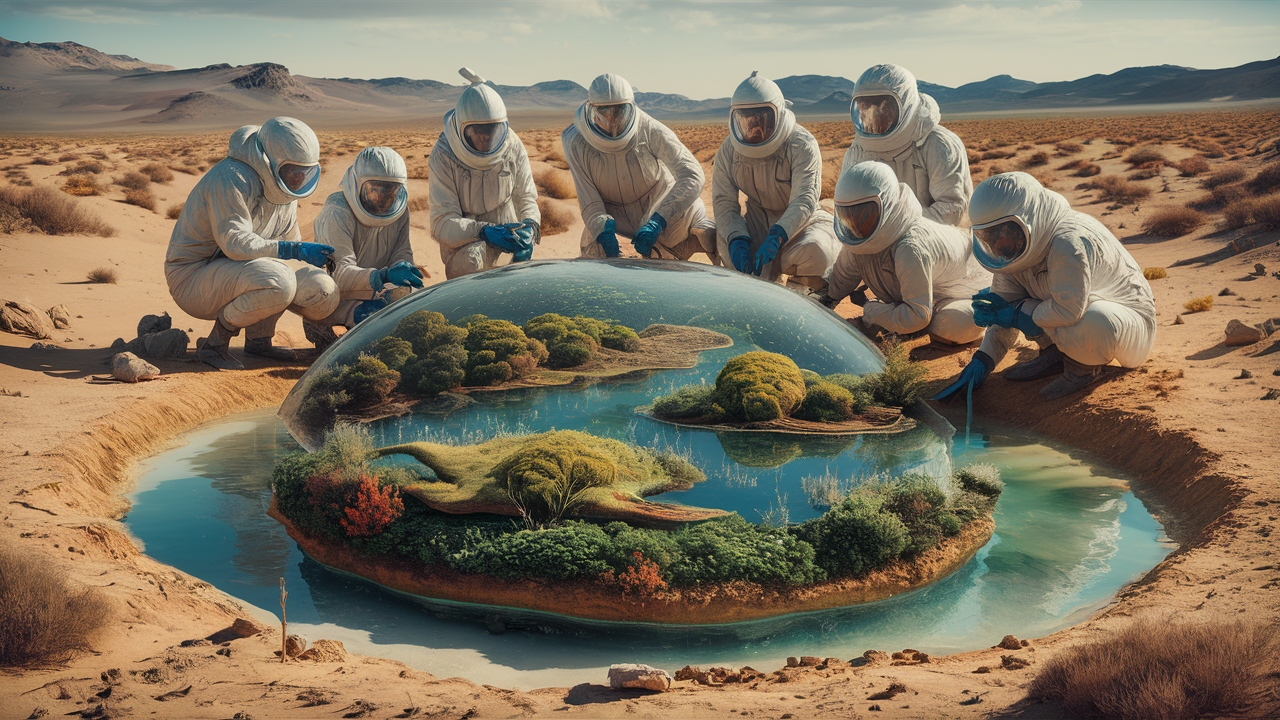📋 Unearthing a Hidden World: Deepest Biosphere Found Yet Beneath Atacama
Deep Biosphere Discovery! Microbes thrive 13 feet below the Atacama Desert's surface. This deepest biosphere ever found rewrites what we know about

Hidden Microbial World Found Beneath Chile's Atacama
Scientists made a cool discovery of hidden life thriving way down deep in Chile's Atacama Desert. Buried over 4 meters below the baked surface lies a "biosphere" full of bacteria.
Past research only found microbes down to 80 cm deep. But this new biosphere is totally cut off from above in the Yungay Valley. Bacteria have settled in between 2 to over 4 meters underground.
Dominating the community are Actinobacteria, a hardy group found in other extreme places like the Arctic or salty seas. Not much is known about microbial worlds so far below desert soils. These communities could be part of an even deeper biosphere under the hyperdry landscape.
The team also spotted Actinobacteria closer to the surface between 2-5 cm deep. Deeper digging revealed Firmicutes bacteria that can withstand salty conditions without needing oxygen. Pretty wild to find such resilient microscopic life lurking beneath the blistering desert!
Life Finds a Way in the Atacama
The Atacama Desert is about as inhospitable as it gets - it's bone-dry and more sunny than even the planet Venus! Not many animals can hack the brutal heat and lack of water.
A few critters do make it work though, like Darwin's teeny mouse and the gray fox sneaking about. But get this - some bacteria are actually living it up down in the salty, mineral-loaded soils of the desert.
It's pretty wild to think microscopic life is thriving where even animals can't survive. Those resilient microbes must have figured out ways to find nutrients and energy in such an extreme biosphere. Life will truly find a way, even in the driest place on Earth!
Digging into the Hidden Desert Biosphere
Scientists wanted to learn more about the microscopic microbes living underground in the Atacama Desert. So they dug up soil samples from a hole in the Valley of Yungay.
Past studies hadn't separated living microbial DNA from dead DNA fragments floating around. But the team came up with a way to isolate DNA still inside currently existing cells.
By sifting through the genetic material pulled from the dirt, they could see what types of microbes were actually alive down there in the desert biosphere. Pretty genius that they figured out how to distinguish active bacteria DNA instead of just getting remnants of past life.
I'm sure digging deeper into that genome goldmine will uncover all sorts of insights into how diverse little microbes survive in such an inhospitable environment below the surface.
Digging into Life in the Desert Biosphere
The researchers said filtering out DNA from dead microbes gave them a much clearer picture of the actual desert biosphere. Before, past studies were probably way off since they included bacteria that had been dead for ages.
Near the surface, lots of bugs were found. But deeper from 2.6 to 6.6 feet, salt levels were too high even for hardy microbes. However, below that they hit a "transition zone" of steady life. This lined up with a change from clay-rich playa deposits to ancient river dirt.
The team thinks Actinobacteria colonized those river deposits around 19,000 years ago. Over millennia, clay slowly buried them deeper. Another cool idea is the microbes might pull water from gypsum minerals down there. When temperatures rise, this reaction releases water for the desert-dwelling bacteria.
